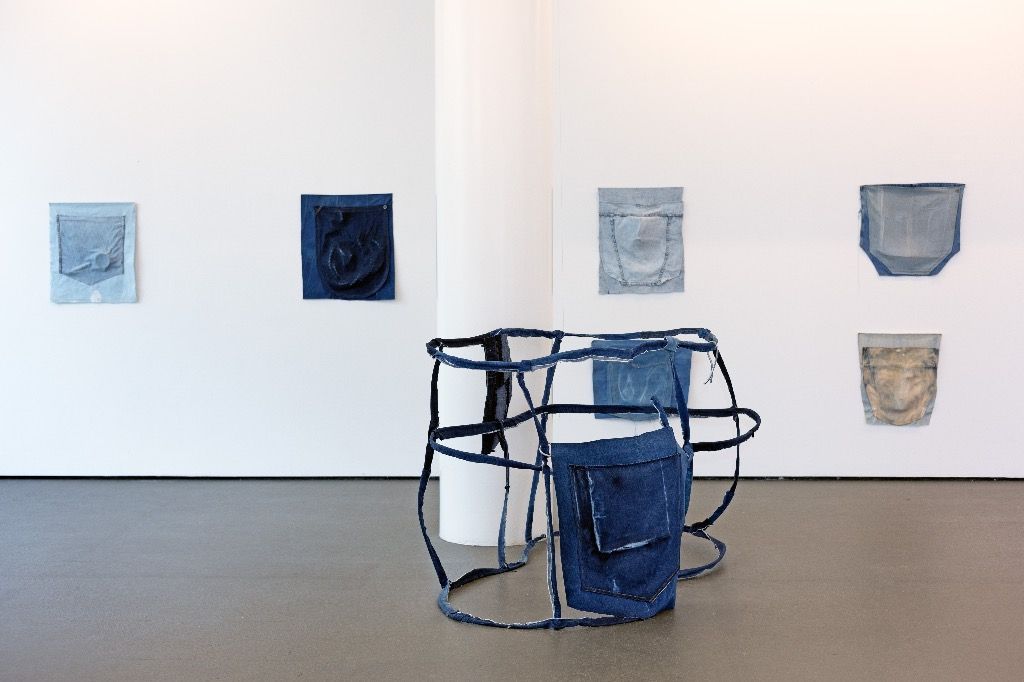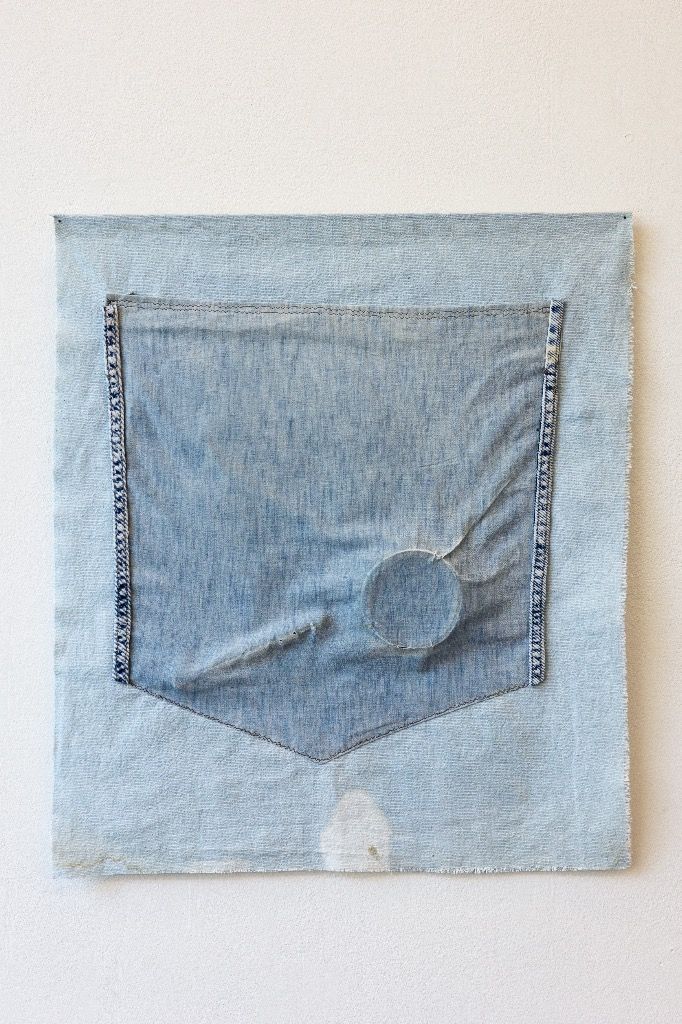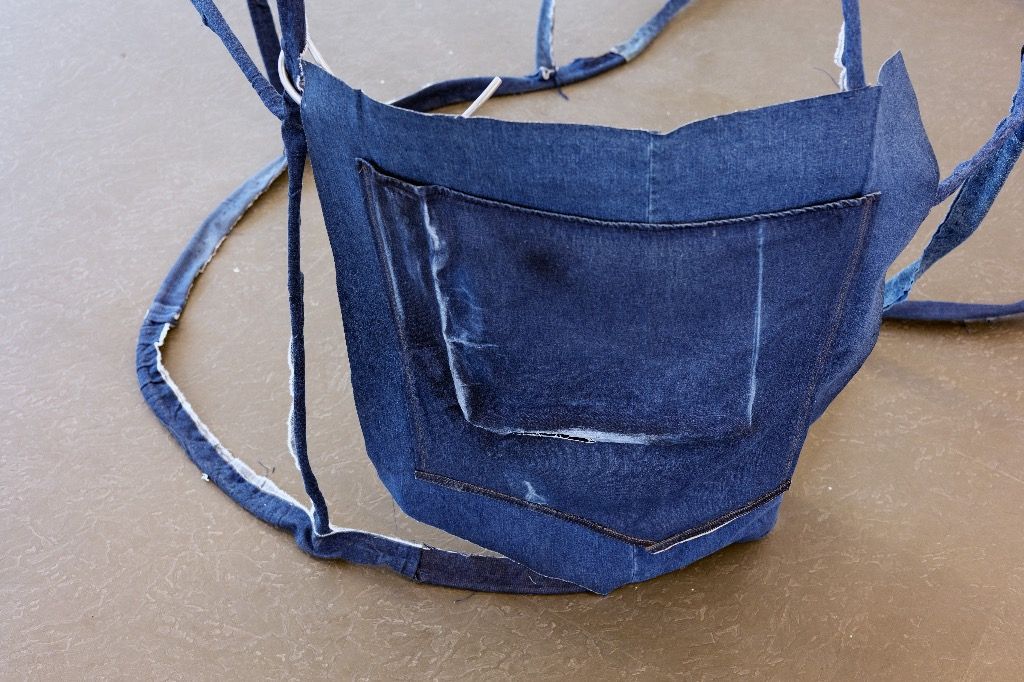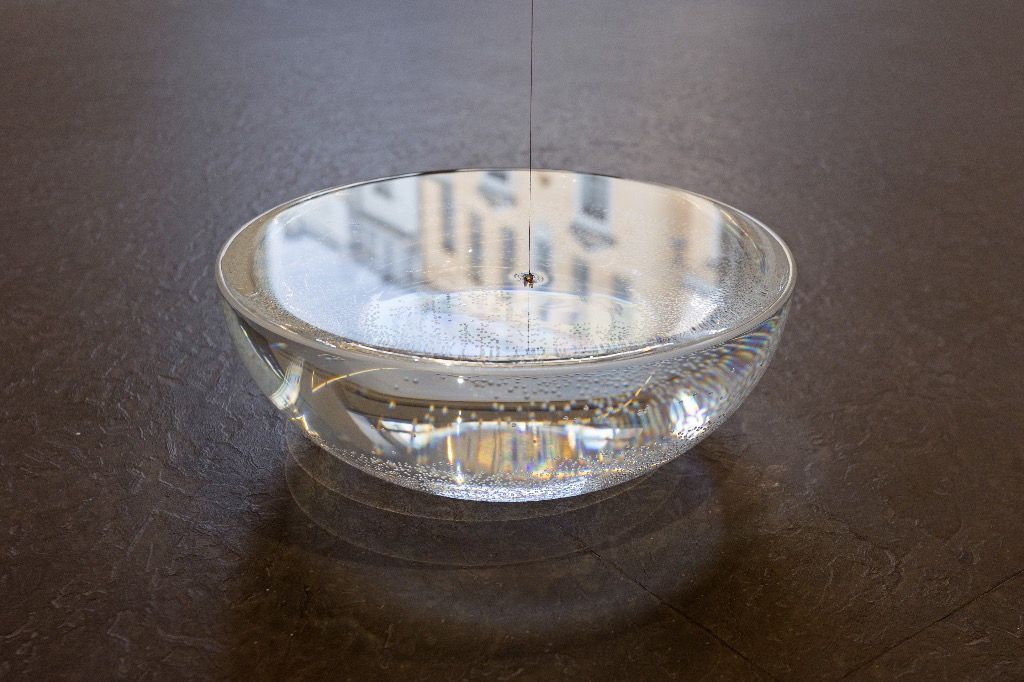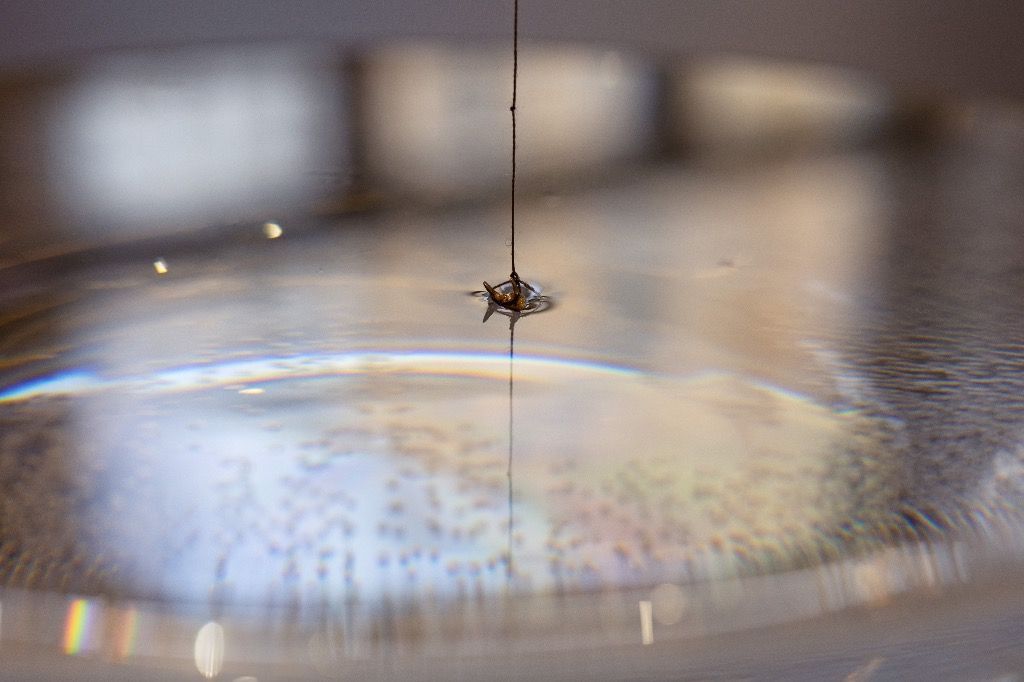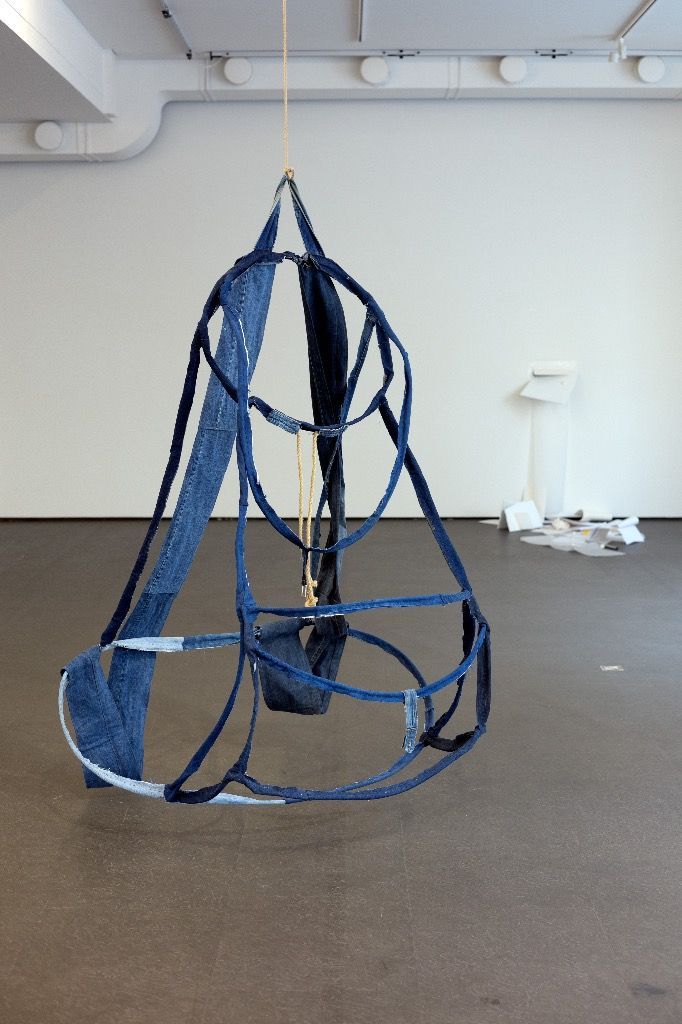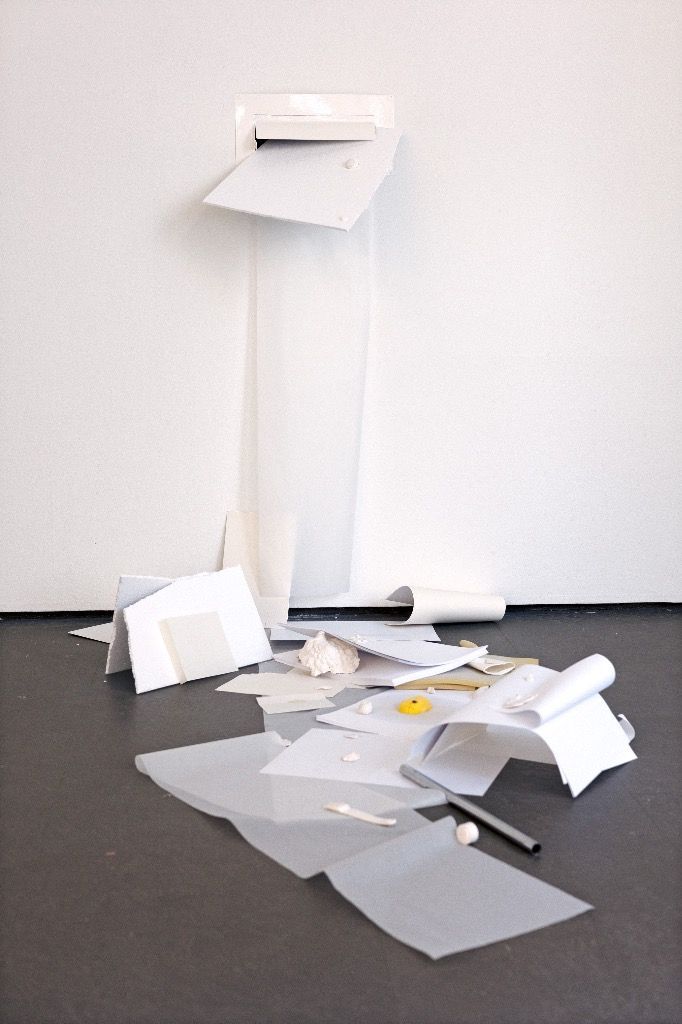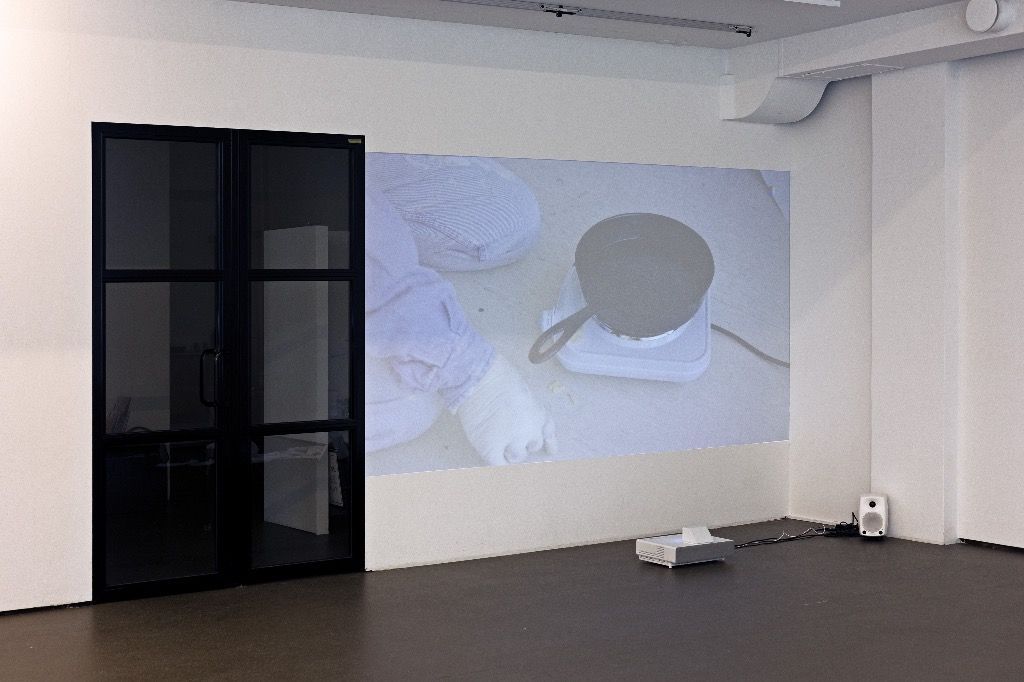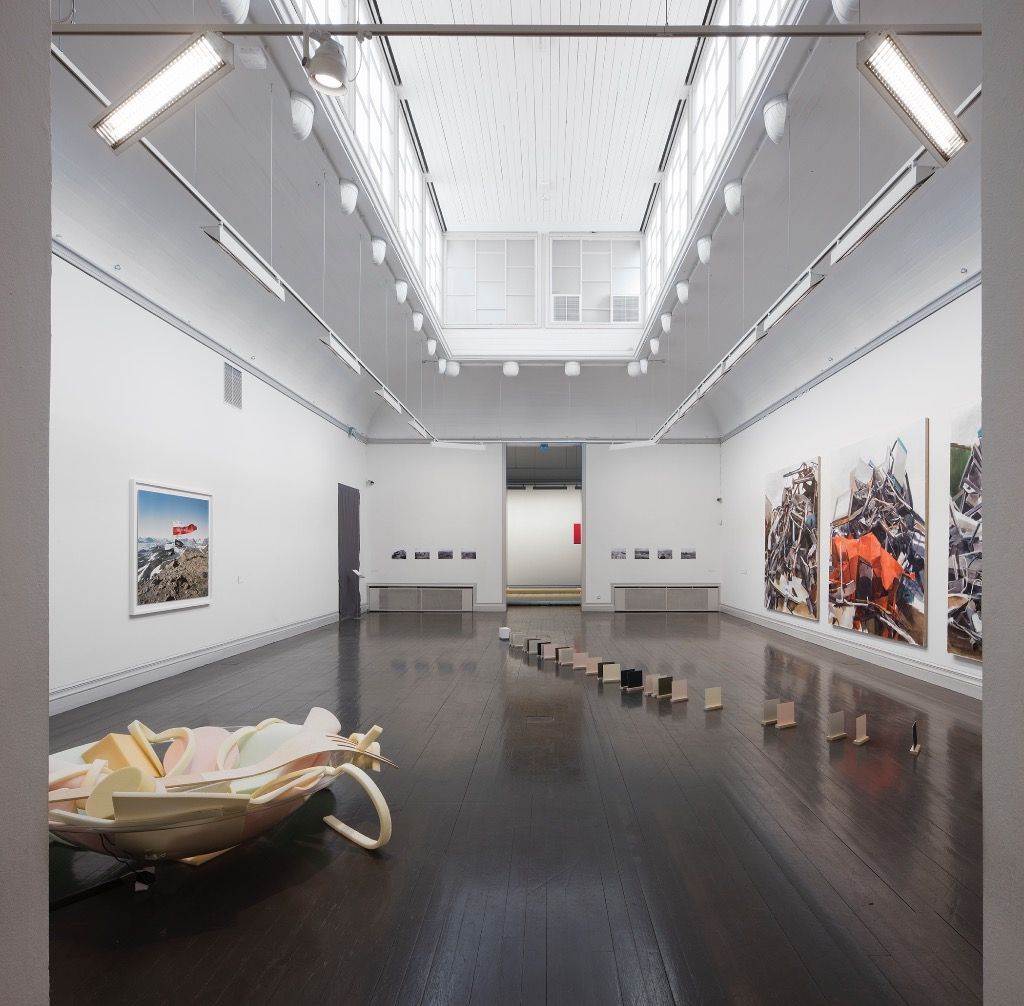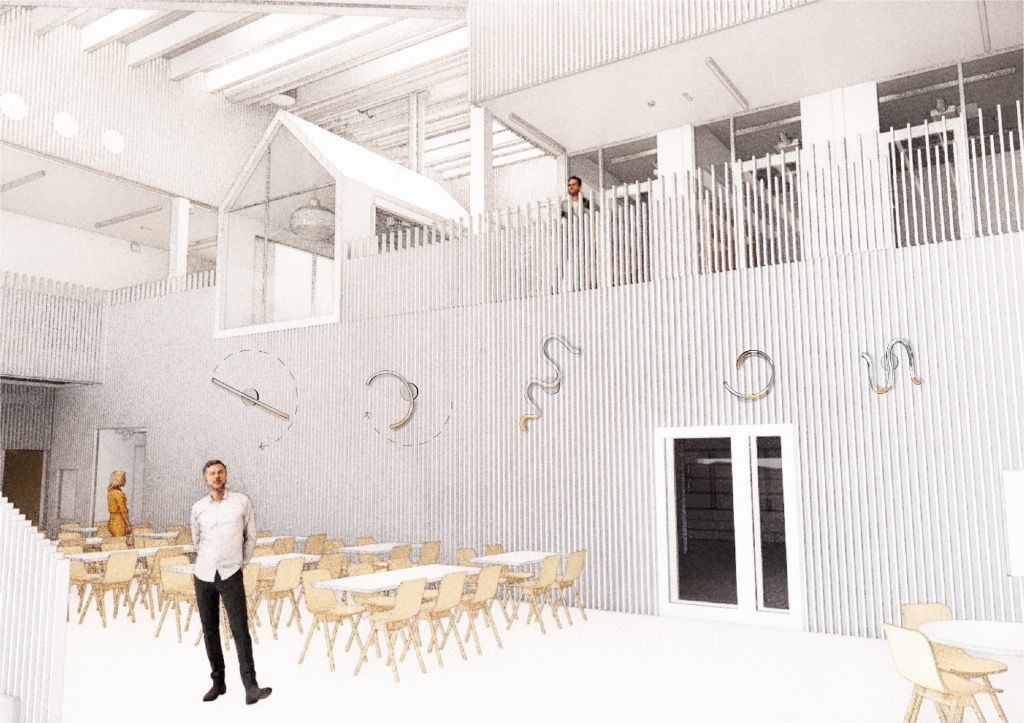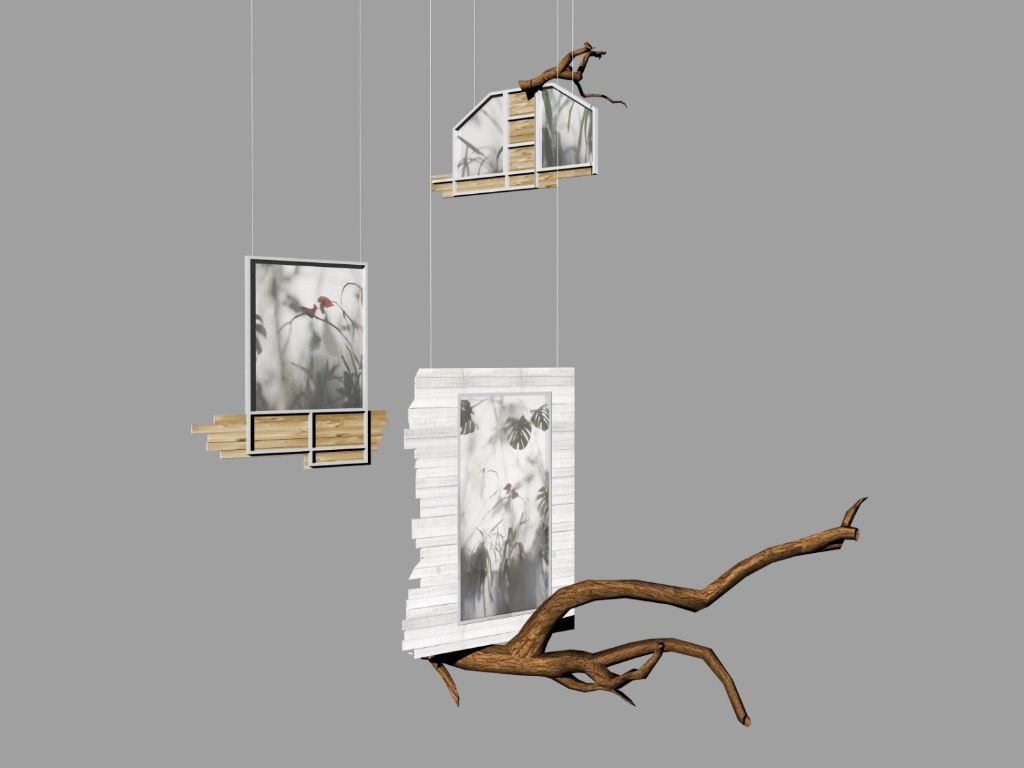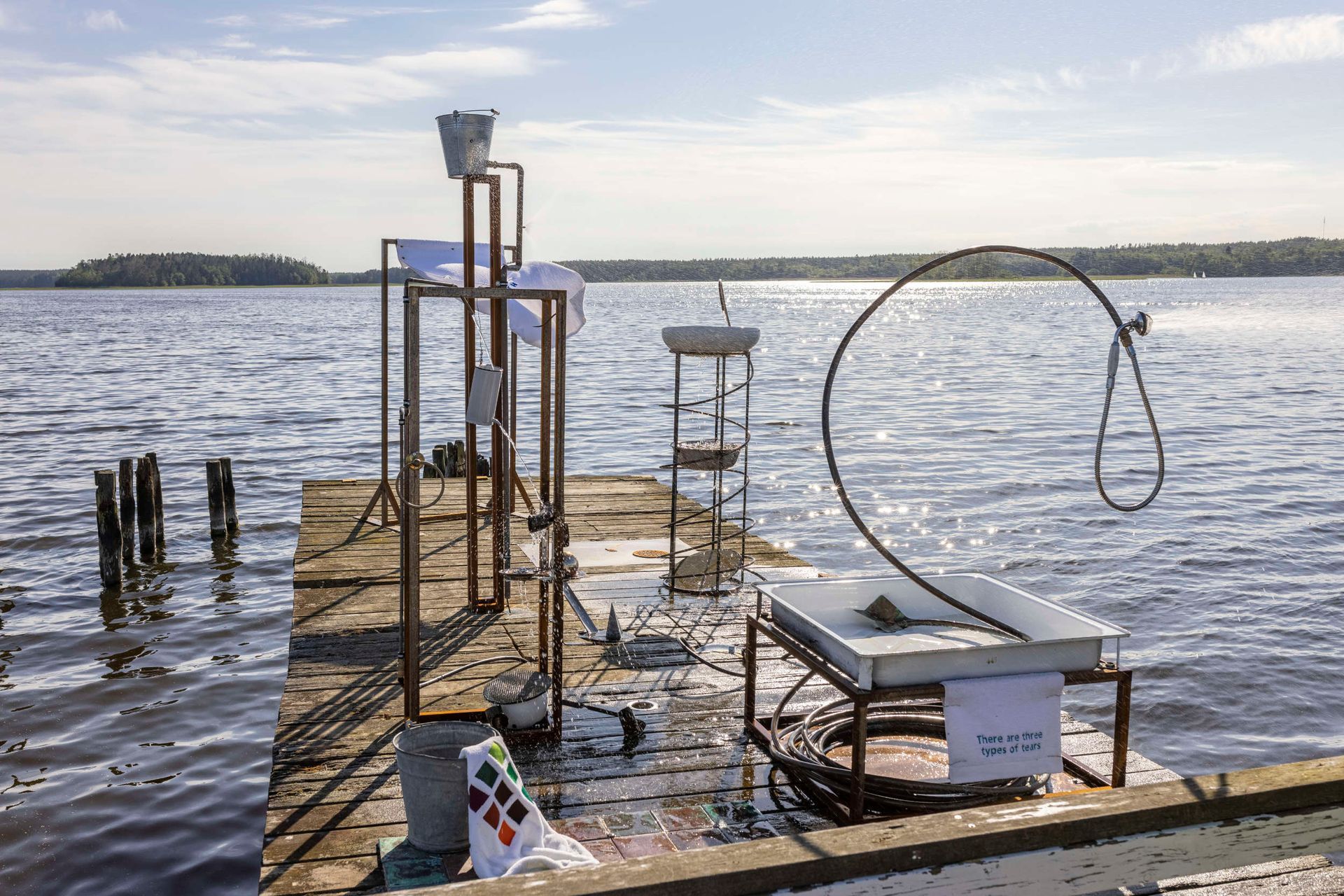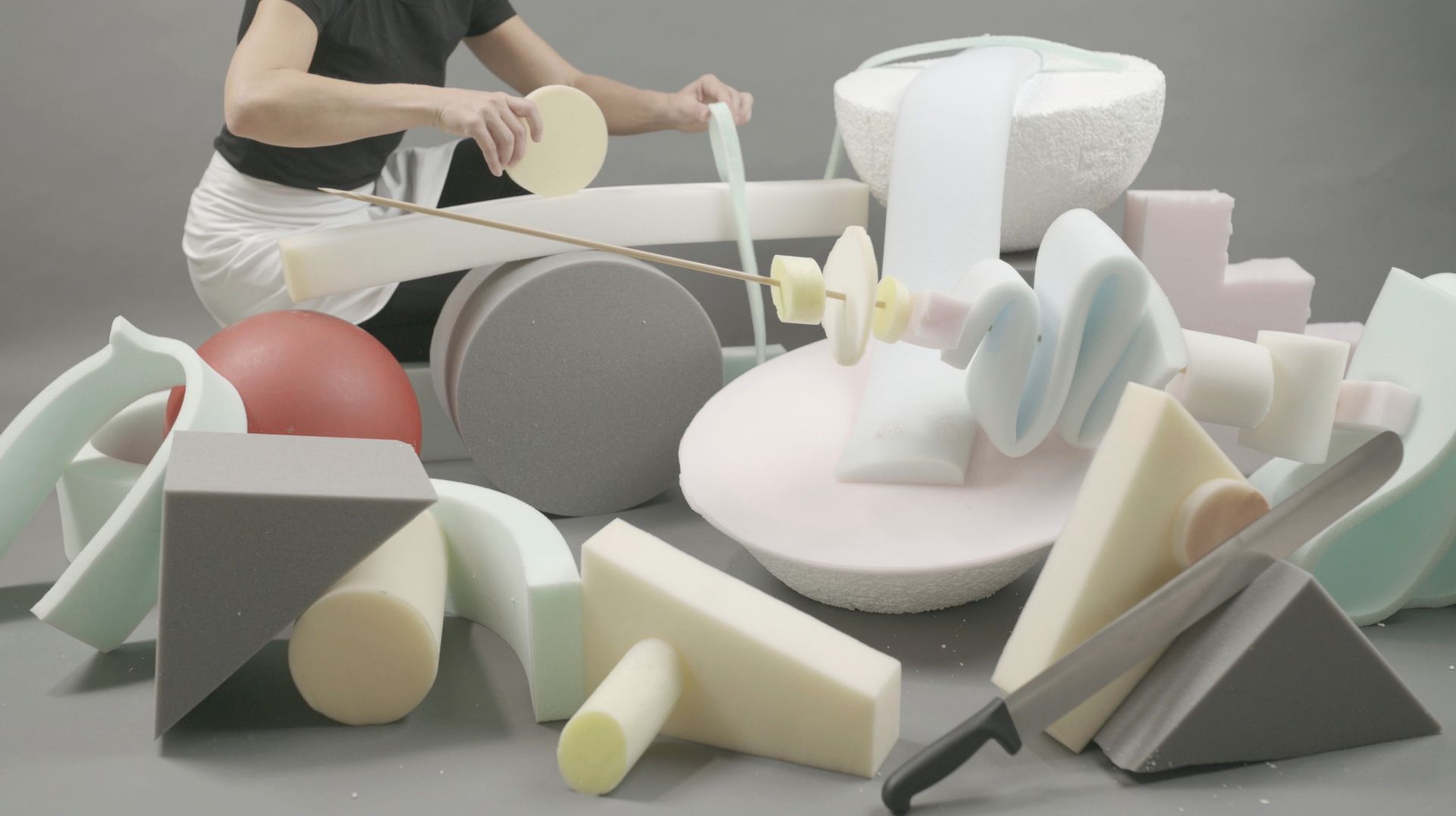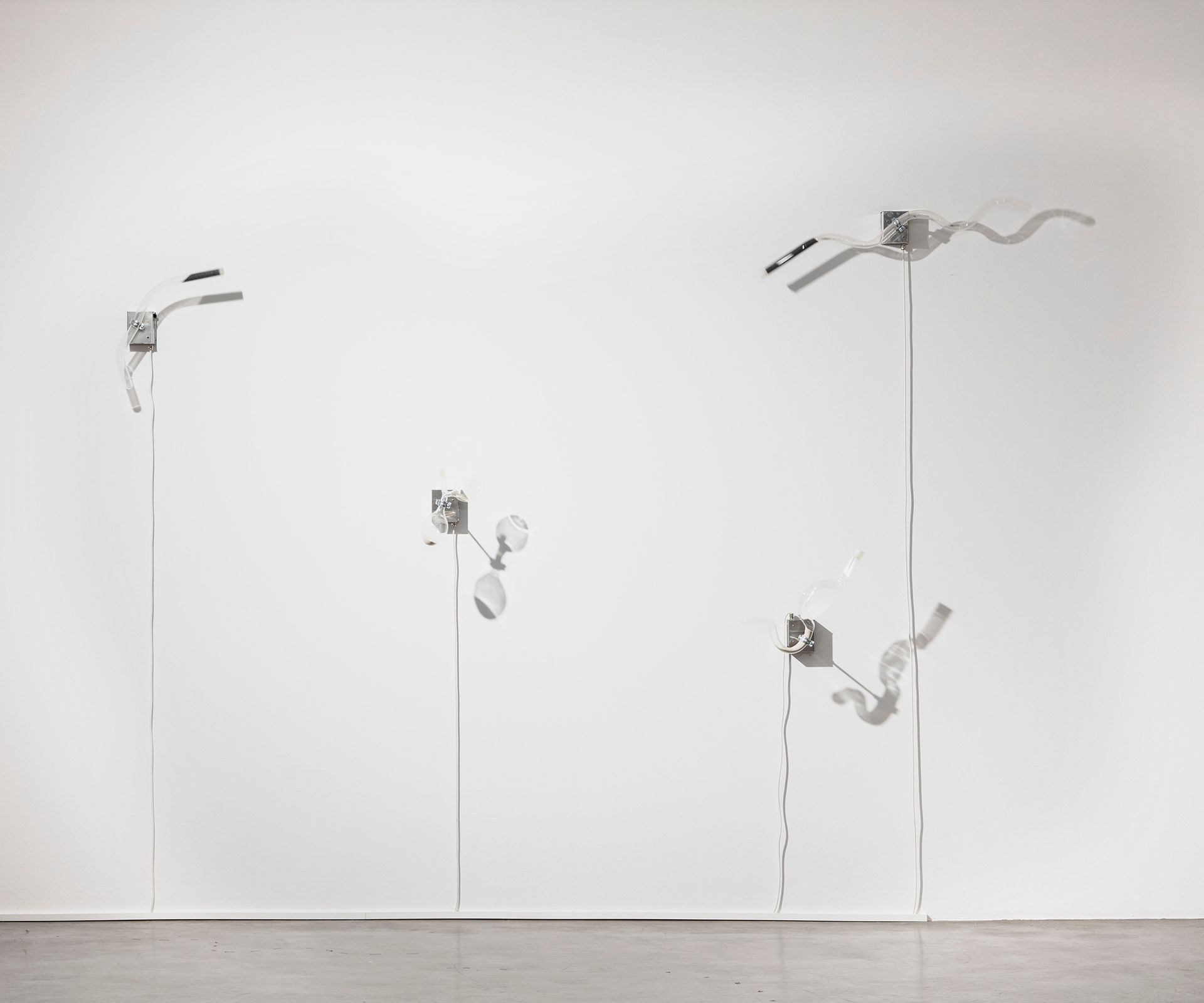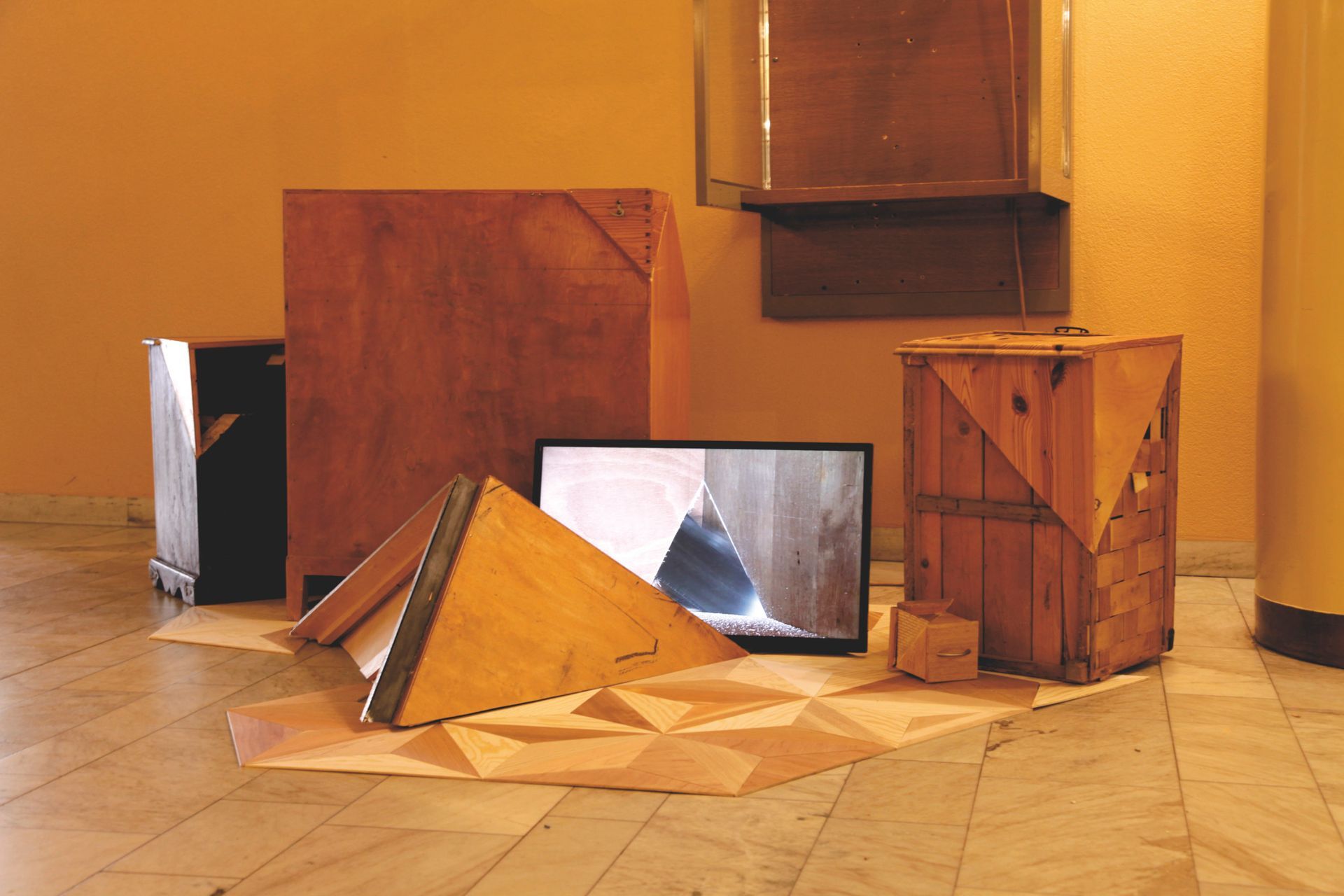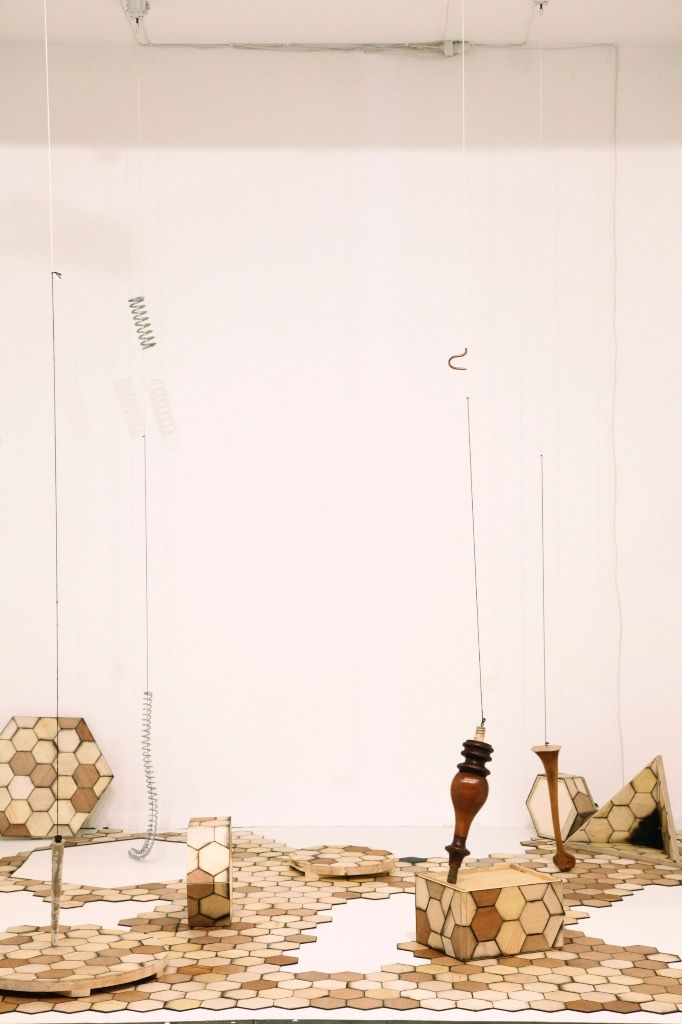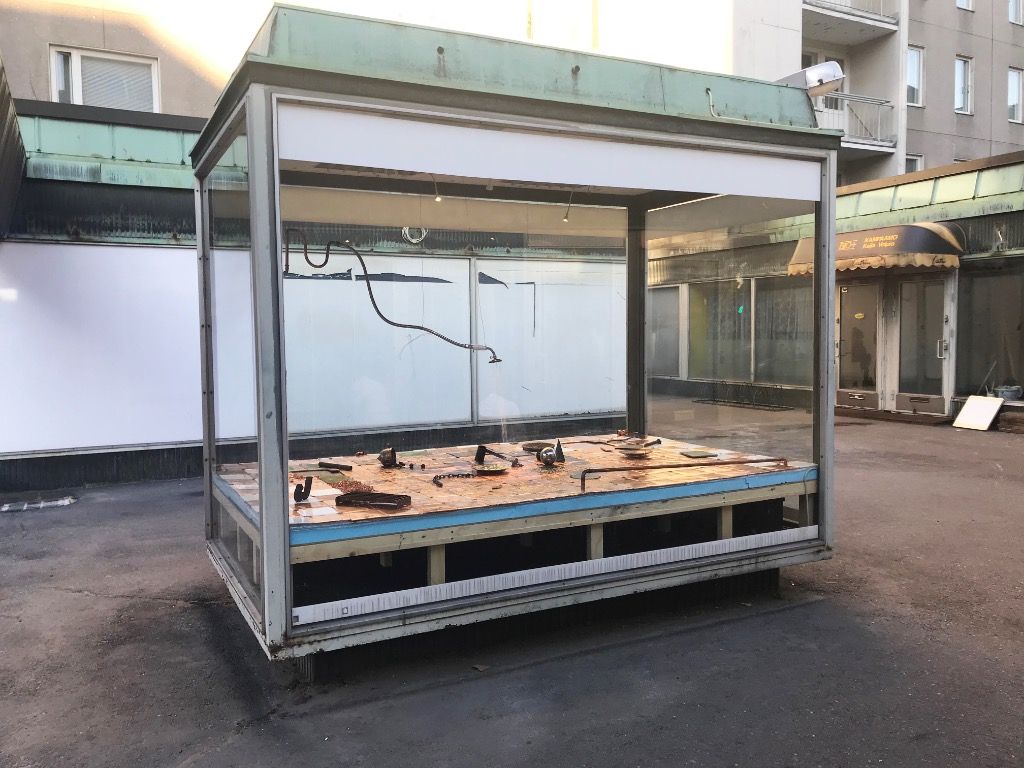Method of Blackmailing and Stealing Letters
2022
-
Read more
In the Method Of Blackmailing And Stealing Letters exhibition Heini Aho introduces a new series of works that in one way or another centre on the subject of theft. Steeling and robbery are a constantly recurring theme in books and films. Action comedies and whodunits are audience hits that never seem to go out of fashion. There is an attractive sheen and mystique to the thief who operates in a carefully planned, systematic and flawless manner. This is more rarely a theme in visual art, which instead often deals with theft of the art itself. Aho uses sculpture and video to construct an exhibition around an undisciplined character who inhabits rather more surrealistic domains where nonsense prevails.
In her art Aho avoids works that accentuate direct meaning, instead she constructs a variety of nodes and frames that serve as a network of associations and ideas that we can move around in. She leaves gaps that urge us to fill them in with a narrative. Her practice has its starting point in her own observations. These can be a play of shadows, a reflection, a movement, a sound, or a pun that become a way in to her evocative, associative ensembles, and her playful slant and curiosity become the driving force behind her art.
It is the anonymous, systematic character who leaves no trace who serves as Aho’s inspiration. Anonymity is a device and a smokescreen that provides cover for a criminal operation. In the exhibition Aho creates an anonymous, yet chaotic, erratic and light-fingered character whose motives remain unclear. In the Penpal video mutated hands make blackmail letters that turn into a cryptic play on words. In this act, which we would normally expect to be executed with surgical precision, a clumsy obsession takes over that instead prompts thoughts of séances and ouijaboards.
In Kangaroo Dungaree named series of reliefs in denim fabric Aho highlights the gaze as an element and the way that pickpockets read their surroundings. These reliefs look like enlarged back pockets of jeans. The large scale is a way of zooming in and showing what matters, and where thieves direct their mind and focus. If we frequently carry the same object, for example, a wallet, telephone or snuff box, in a pocket, it tends to mechanically wear away a visible imprint in the fabric of the jeans. Aho utilizes the enlarged scale and wears marks into the material using objects of a more peculiar and unexpected kind. She thus also sheds light on the way that our habits and behaviour patterns are often right there, highly exposed, to be read by our surroundings.
It is also there, in the watchful gaze, that the shadow in Aho’s exhibition raises its head. While the creative, cryptic phishing letter in our Inbox or the scammers on the second-hand market hope to induce impulsiveness and mistakes, there are much greater powers that think more long-term and strategically. All of our digital imprints are monitored and become patterns that are used to construct a picture of us. What is then done with that picture can easily turn into an uncomfortable thought. Since theft is largely about crossing a boundary of trust and invading the intimate and private. Thus, in Aho’s exhibition we can also learn from her nonsense, that there is a chance for us to create our own private, perhaps even anonymous, space specifically by behaving chaotically.
Markus Åström
Curator
-
Method Of Blackmailing And Stealing Letters
ButtonIn the Method Of Blackmailing And Stealing Letters exhibition Heini Aho introduces a new series of works that in one way or another centre on the subject of theft. Steeling and robbery are a constantly recurring theme in books and films. Action comedies and whodunits are audience hits that never seem to go out of fashion. There is an attractive sheen and mystique to the thief who operates in a carefully planned, systematic and flawless manner. This is more rarely a theme in visual art, which instead often deals with theft of the art itself. Aho uses sculpture and video to construct an exhibition around an undisciplined character who inhabits rather more surrealistic domains where nonsense prevails.
In her art Aho avoids works that accentuate direct meaning, instead she constructs a variety of nodes and frames that serve as a network of associations and ideas that we can move around in. She leaves gaps that urge us to fill them in with a narrative. Her practice has its starting point in her own observations. These can be a play of shadows, a reflection, a movement, a sound, or a pun that become a way in to her evocative, associative ensembles, and her playful slant and curiosity become the driving force behind her art.
It is the anonymous, systematic character who leaves no trace who serves as Aho’s inspiration. Anonymity is a device and a smokescreen that provides cover for a criminal operation. In the exhibition Aho creates an anonymous, yet chaotic, erratic and light-fingered character whose motives remain unclear. In the Penpal video mutated hands make blackmail letters that turn into a cryptic play on words. In this act, which we would normally expect to be executed with surgical precision, a clumsy obsession takes over that instead prompts thoughts of séances and ouijaboards.
In Kangaroo Dungaree named series of reliefs in denim fabric Aho highlights the gaze as an element and the way that pickpockets read their surroundings. These reliefs look like enlarged back pockets of jeans. The large scale is a way of zooming in and showing what matters, and where thieves direct their mind and focus. If we frequently carry the same object, for example, a wallet, telephone or snuff box, in a pocket, it tends to mechanically wear away a visible imprint in the fabric of the jeans. Aho utilizes the enlarged scale and wears marks into the material using objects of a more peculiar and unexpected kind. She thus also sheds light on the way that our habits and behaviour patterns are often right there, highly exposed, to be read by our surroundings.
It is also there, in the watchful gaze, that the shadow in Aho’s exhibition raises its head. While the creative, cryptic phishing letter in our Inbox or the scammers on the second-hand market hope to induce impulsiveness and mistakes, there are much greater powers that think more long-term and strategically. All of our digital imprints are monitored and become patterns that are used to construct a picture of us. What is then done with that picture can easily turn into an uncomfortable thought. Since theft is largely about crossing a boundary of trust and invading the intimate and private. Thus, in Aho’s exhibition we can also learn from her nonsense, that there is a chance for us to create our own private, perhaps even anonymous, space specifically by behaving chaotically.
Markus Åström
Curator
-
Kangaroo Dungaree
ButtonSerie of large scale backpockets, that shows traces of what has been inside.
Fabric, sandpaper, sugar
-
Pick A Pocket
Buttonfabric, metal
-
Polishing The Lustrous Life Of The Golden Fly That Needs To Just Fly Because It Will Soon Die
ButtonA Golden fly spinning slowly and constantly on top of the water
gold, thread, motor, soda, water
-
Polishing The Lustrous Life Of The Golden Fly That Needs To Just Fly Because It Will Soon Die
Buttongold, thread, motor, soda, water
-
Backpack (No Roof, No walls, No Missed Calls)
Buttonjeans, rope, thread, aluminium
-
Bring Out The Trash, Pick Up The Post
Buttonmixed media
-
Penpal
Buttonvideo 10:30
